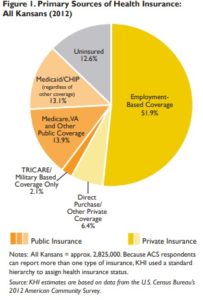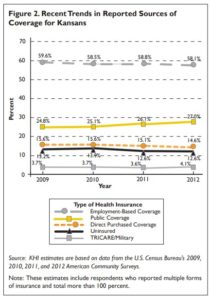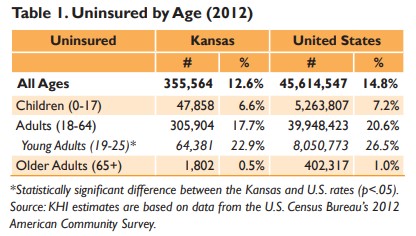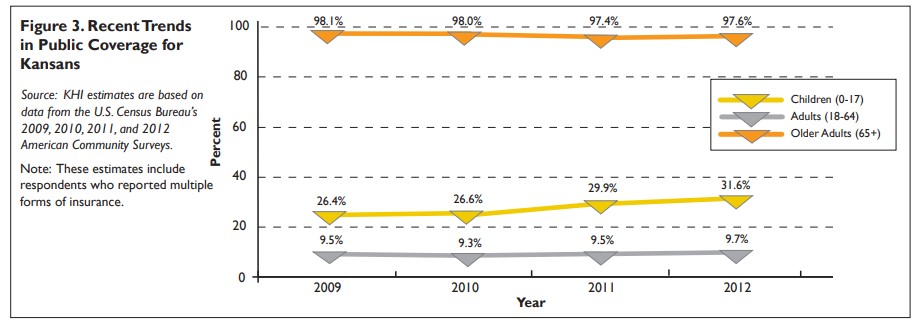
Current Coverage
In 2012, an estimated 356,000 Kansans were uninsured—12.6 percent. There has been no change in the number of uninsured Kansans since 2011.
The percentage of Kansans without health insurance in 2012—an estimated 12.6 percent— continues to be significantly lower than the national rate of 14.8 percent.
The percentage of Kansans with public coverage increased from 26.1 percent in 2011 to 27.0 percent in 2012. This continues a trend illustrated in Figure 2 below.




